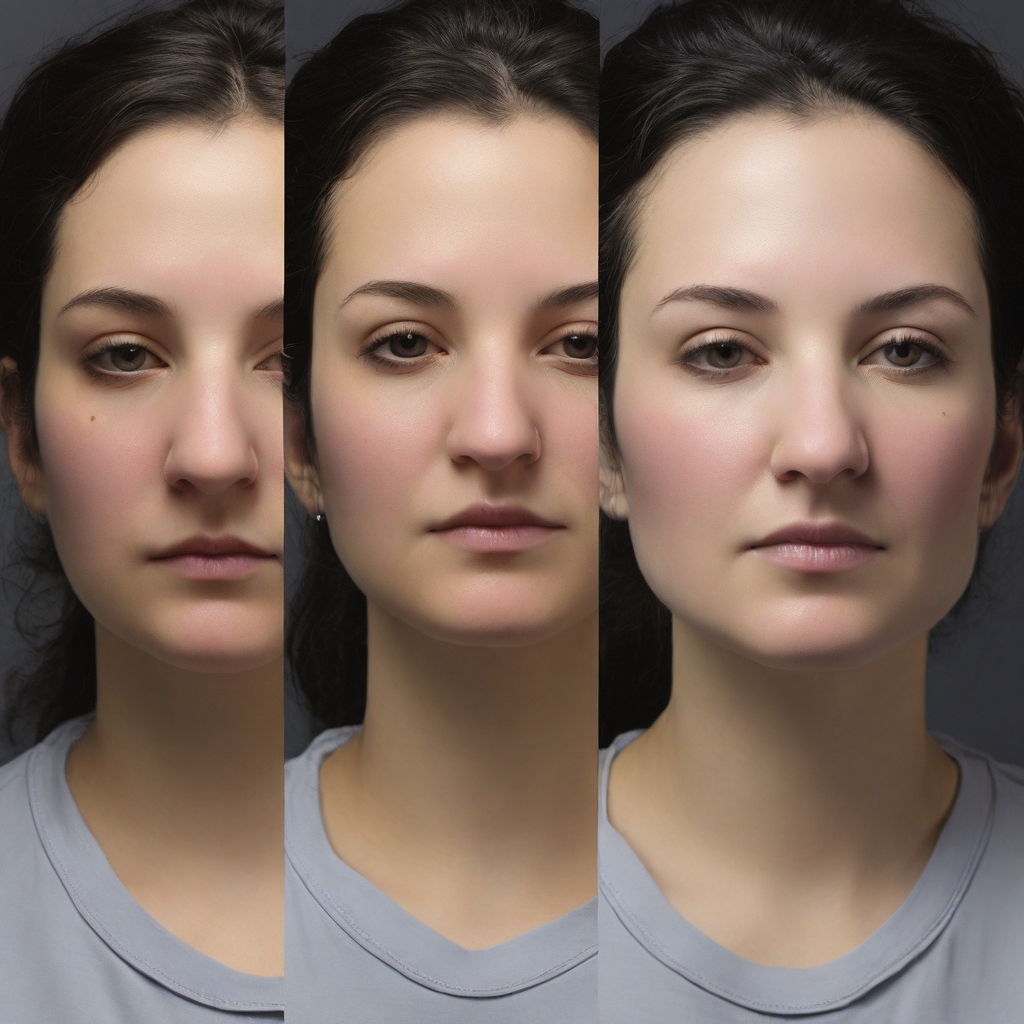Discover how long swelling typically persists after a nose job. Learn about the factors influencing swelling duration and what to expect during the recovery process.
Introduction
As part of a rhinoplasty, commonly referred to as a nose job, you can achieve a refined nasal appearance not only during the surgery but also during the recovery period. Inquiring about the duration of swelling following surgery is one of the concerns people often have. For managing expectations and ensuring a smoother recovery, it is imperative to understand how long swelling lasts after a nose job. This study examines the factors influencing swelling duration and provides insights into what patients can expect during the postoperative period.
How long does swelling last after nose job?
The swelling that occurs after a nose job can be a bit of a roller coaster ride in the healing process. Here are some comments regarding the duration of swelling after a nose job:
When swelling occurs, it is typically at its greatest during the first few days after surgery. Therefore, do not be alarmed if your nose appears puffier than usual after surgery.
As the days pass, you may notice the swelling gradually subsiding. Most swelling should subside within three to four weeks after the surgery. During this time, you might also experience some discomfort in your nose and possibly a headache. It's all part of the recovery process, so follow your surgeon's instructions for managing pain.
For a short period, you might experience a stuffy nose, which may make breathing more difficult. This is normal as your nose adjusts to its new shape and internal tissues begin to heal.
Although everyone's healing journey is unique, your swelling timeline may vary slightly. However, by the end of the first month, you should be able to see significant improvement in your swelling, and your nose will gradually begin to resemble its final appearance.
Factors Influencing Swelling Duration
Edema, or swelling, is a condition that occurs when excess fluid accumulates in tissues, causing visible or palpable enlargement as a result of injury, inflammation, or infection. There are several factors that contribute to the duration of swelling, each of which plays a significant role in its resolution. It is important to understand these factors in order to effectively manage and mitigate swelling.
1. Nature of Injury or Condition
- Swelling duration depends on the severity and type of injury or underlying condition. Traumatic injuries, such as sprains, strains, and fractures, often cause acute swelling that resolves within a few days to a few weeks.
- In chronic conditions such as arthritis or venous insufficiency, swelling may persist or recur over an extended period of time.
2. Extent of Tissue Damage
- Minor injuries may result in temporary and mild swelling, which resolves relatively quickly. Swollen tissues are directly influenced by the extent of tissue damage.
- In the case of severe trauma or extensive tissue damage, the body's repair mechanisms can be activated, resulting in more prolonged and pronounced swelling.
3. Inflammatory Response
- As a natural reaction to injury or infection, inflammation is characterized by increased blood flow and immune cell activity. The intensity and duration of the inflammation will determine the duration of swelling.
- Rheumatoid arthritis, for instance, may be associated with chronic inflammation, which may result in persistent swelling as a result of an ongoing activation of the immune system.
4. Blood Circulation
- It is essential for swelling to be removed by adequate blood circulation. By removing excess fluid and promoting tissue healing, blood circulation plays a crucial role in resolving swelling.
- A lack of circulation, whether caused by vascular disorders or prolonged immobilization, can lead to swelling by preventing fluid drainage from the affected area.
5. Lymphatic Drainage
- Fluid balance and swelling resolution are important functions of the lymphatic system. Lymphatic vessels collect excess fluid from tissues and return it to the bloodstream.
- It is not uncommon for conditions such as lymphedema to exhibit impaired lymphatic drainage, which can lead to persistent swelling due to fluid accumulation.
6. Treatment and Management
- An appropriate treatment and management strategy can significantly influence swelling duration. A common treatment recommendation for acute injuries is RICE (Rest, Ice, Compression, Elevation).
- For more severe or chronic swelling, medical interventions may be required, such as anti-inflammatory medications, physical therapy, or surgical procedures.

7. Individual Factors
- Several factors, including age, overall health, and immune function, can influence swelling duration. Younger individuals may be able to recover from swelling more quickly as a result of their robust healing processes.
- The body's ability to heal and resolve inflammation may be impaired by pre-existing health conditions or compromised immune function.
Swelling Reduction in the First Month
Following a nose job, swelling reduction is an important part of the post-operative healing process. The following information will assist you in easing the recovery process during this time:
- Immediate Post-Op Swelling: Following your nose job, expect swelling to be at its peak during the initial days. Your nose may appear significantly swollen, and this is completely normal as your body reacts to the surgical trauma.
- First Week: Throughout the first week post-surgery, the swelling gradually starts to decrease. However, it's important to note that some swelling will still be present, and your nose may not yet reflect the final results of the procedure.
- Second Week: By the end of the second week, you should begin to notice more noticeable reduction in swelling. Your nose will start to resemble its new shape, although some residual swelling may persist, especially in the tip area.
- Third and Fourth Weeks: As you progress into the third and fourth weeks post-surgery, the majority of visible swelling should continue to diminish. Your nose will continue to refine its shape, and you'll likely feel more comfortable with its appearance.
Tips for Swelling Reduction:
To aid in swelling reduction during the first month after your nose job, follow these tips:
- Elevation: Keep your head elevated, especially while sleeping, to minimize swelling.
- Cold Compresses: Apply cold compresses gently to the nasal area to help reduce swelling and alleviate discomfort.
- Follow Post-Op Instructions: Adhere to your surgeon's post-operative care instructions diligently, including taking prescribed medications and attending follow-up appointments.
- Avoid Strenuous Activities: Refrain from engaging in strenuous activities or exercises that could increase swelling or put undue pressure on your nose.
- Patience is Key: Remember that every individual heals at their own pace, so be patient with the process. While significant swelling reduction typically occurs within the first month, it may take several months for residual swelling to completely dissipate and for your nose to settle into its final shape.
By actively managing swelling and following your surgeon's guidance, you can promote a smoother and more comfortable recovery journey during the critical first month after your nose job. Trust in the process, and soon enough, you'll be enjoying the aesthetic benefits of your rhinoplasty procedure.
Monitoring Swelling Progress
After undergoing a nose job, monitoring swelling progress is vital for understanding the healing process and anticipating the final outcome. Here's a comprehensive guide on how to effectively monitor swelling after rhinoplasty:
- Initial Assessment: Immediately following the surgery, expect significant swelling around the nasal area. This initial swelling is a natural response to the trauma of the surgery and may obscure the final result.
- Daily Observations: In the days following your nose job, make it a habit to observe any changes in swelling. Take note of the size, shape, and feel of your nose as these factors can indicate the progress of swelling reduction.
- Photographic Documentation: Consider taking regular photographs of your nose from various angles to track swelling progression over time. This visual record can provide valuable insights into the changes occurring during the healing process.
- Consultation with Your Surgeon: Attend scheduled follow-up appointments with your surgeon, who will assess your swelling progress and provide personalized guidance based on your recovery trajectory. Don't hesitate to raise any concerns or questions during these appointments.
- Comparison to Pre-Op Photos: Compare your current appearance to pre-operative photos to gauge how much swelling has subsided and how your nose is evolving towards its final shape.
- Patience and Realistic Expectations: Understand that swelling resolution is a gradual process that may take several months to complete. Be patient and maintain realistic expectations, knowing that the final result may not be immediately apparent.
- Red Flags to Watch For: While some swelling is expected, be vigilant for any signs of excessive or unusual swelling, such as sudden increases in size, severe pain, or changes in skin color. If you notice any concerning symptoms, contact your surgeon promptly for further evaluation.
- Lifestyle Factors: Pay attention to lifestyle factors that can affect swelling, such as diet, hydration, and stress levels. Maintaining a healthy lifestyle can support the body's natural healing processes and aid in swelling reduction.
- Gradual Improvement Over Time: Keep in mind that swelling typically diminishes gradually over time, with the most significant reduction occurring in the first few weeks to months after surgery. Residual swelling may persist for up to a year as your nose settles into its final shape.
By actively monitoring swelling progress and collaborating closely with your surgeon, you can navigate the post-operative period with confidence and optimize the outcome of your nose job. Trust in the healing process, and soon enough, you'll enjoy the beautiful results of your rhinoplasty journey.
FAQ’s
Although each patient and procedure varies, the majority of swelling typically decreases within the initial month post-surgery, with approximately 90% of swelling subsiding within the first three months. However, the complete outcome is achieved in the remaining 10%, where optimal definition of the nasal tip and bridge is realized.
It may require up to a year for your nose to completely adjust to its new shape. Throughout this period, experiencing some facial swelling is common. Individuals undergoing functional rhinoplasty to correct a deviated septum typically notice improvements within six weeks.
n this blog post, we describe the end to end design and implement of the Match Score and the challenges
Utilize Ice: Applying ice packs to your cheeks in the initial days post-surgery can effectively reduce swelling. Ensure consistent application several times a day for optimal results. Elevate: Keeping your head elevated aids in minimizing swelling following nose surgery. Many rhinoplasty patients find sleeping in a recliner during the first week or two post-surgery beneficial for this purpose.
A bruised nose can lead to discomfort and swelling in both the nose and face. However, if no additional damage is present, it typically improves within a few weeks through home remedies. Ensuring follow-up care is crucial for proper treatment and ensuring your safety.
Typically, swelling is the primary cause for the appearance of increased size in your nose following rhinoplasty, and this is entirely normal. In general, about half of the swelling in the nasal tip diminishes within a month, but achieving the final shape of the tip usually requires at least a year.
Conclusion
The duration of swelling after a nose job varies from person to person. While the majority of visible swelling typically subsides within the first few weeks to months post-surgery, it may take up to a year for the nose to reach its final shape. Patience, adherence to post-operative care instructions, and regular follow-up appointments with your surgeon are key to managing swelling effectively and achieving optimal results from your rhinoplasty procedure. Trust in the healing process, and soon enough, you'll enjoy the aesthetic enhancements of your newly refined nose.


